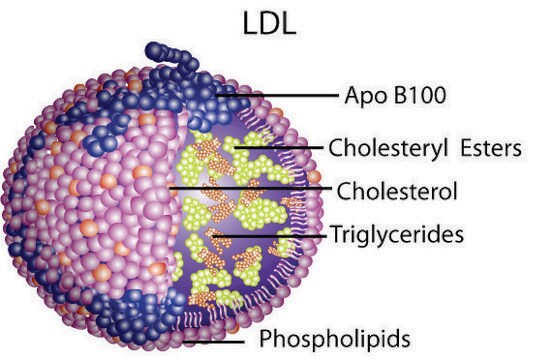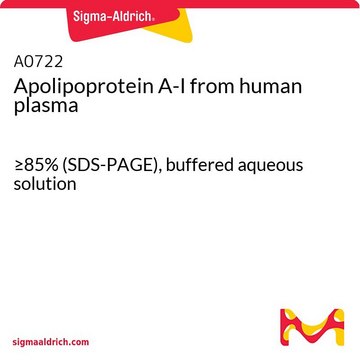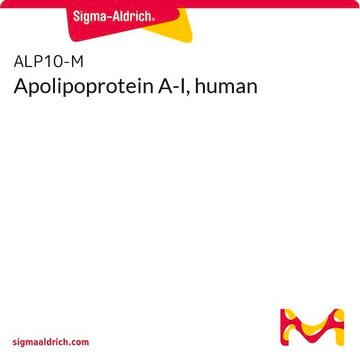L8039
Lipoprotein, high density from human plasma
≥95% (SDS-PAGE), solution
Synonym(s):
α-Lipoprotein, HDL, High density lipoprotein
About This Item
Recommended Products
biological source
human plasma
Quality Level
Assay
≥95% (SDS-PAGE)
form
solution
packaging
vial of 10 mg protein
technique(s)
cell culture | mammalian: suitable
functional group
ester
phospholipid
shipped in
wet ice
storage temp.
2-8°C
Gene Information
human ... APOB(338) , APOC2(344) , APOE(348)
Looking for similar products? Visit Product Comparison Guide
Biochem/physiol Actions
HDL is used in cardiovascular research and the development of potential therapeutic approaches to cardiovascular risk management.
Physical form
Other Notes
Disclaimer
Storage Class Code
10 - Combustible liquids
WGK
WGK 2
Flash Point(F)
Not applicable
Flash Point(C)
Not applicable
Personal Protective Equipment
Certificates of Analysis (COA)
Search for Certificates of Analysis (COA) by entering the products Lot/Batch Number. Lot and Batch Numbers can be found on a product’s label following the words ‘Lot’ or ‘Batch’.
Already Own This Product?
Find documentation for the products that you have recently purchased in the Document Library.
Customers Also Viewed
Articles
Since cholesterol is a water-insoluble molecule it must be packaged for transport within the plasma. The particles that package cholesterol, cholesteryl esters, and triglycerides for transport, are called lipoproteins.
Omega-3 Fatty Acids and Heart Disease
Our team of scientists has experience in all areas of research including Life Science, Material Science, Chemical Synthesis, Chromatography, Analytical and many others.
Contact Technical Service






